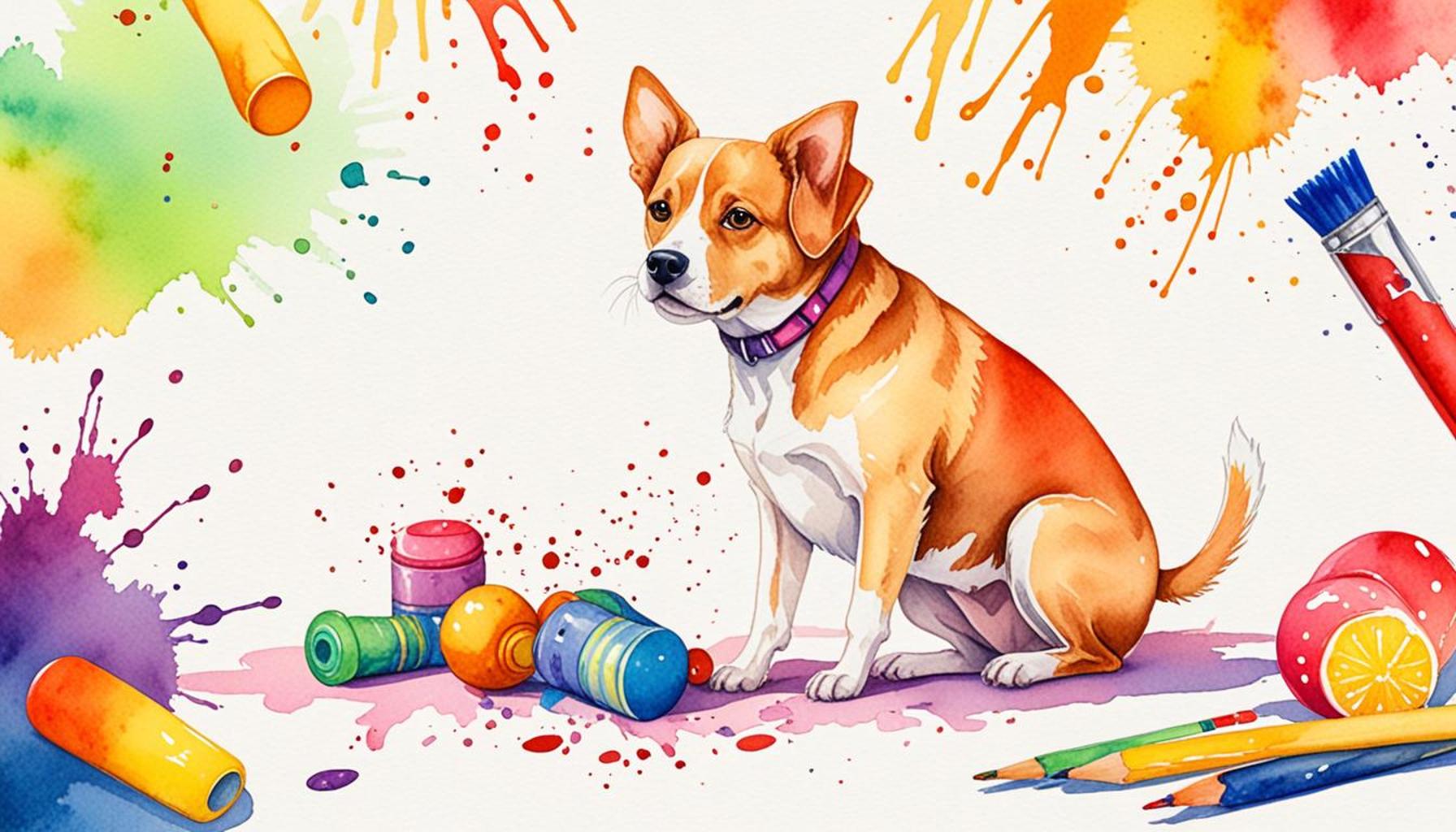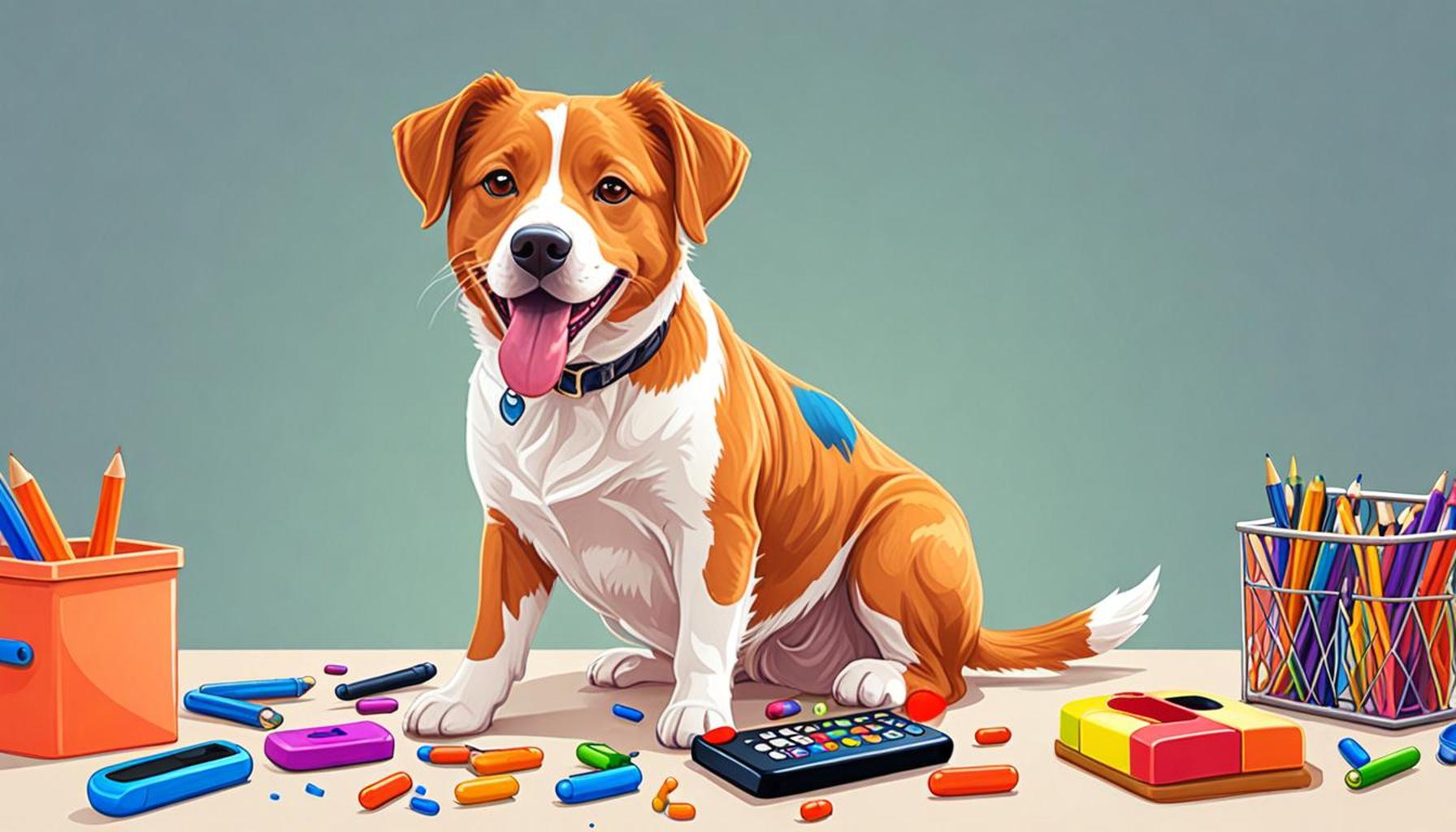Effective Positive Reinforcement Techniques for Dog Training

The Transformative Benefits of Positive Reinforcement in Dog Training
Dog training can often feel like a daunting task, but with the right approach, it can transform into an engaging experience for both you and your furry friend. Positive reinforcement techniques have emerged as a leading method for teaching dogs desirable behaviors while strengthening the bond between pet and owner. This training approach has been widely embraced by professional trainers and pet owners alike, as it effectively capitalizes on the natural instincts of dogs to seek rewards.
This method focuses on rewarding good behavior instead of punishing mistakes, fundamentally changing how we communicate with our pets. By doing so, dogs learn to associate obedience and good manners with a positive outcome, such as a tasty treat or enthusiastic praise. This constructive feedback loop makes it easier for dogs to grasp complex commands and behaviors, ultimately making training sessions more effective. Here are some key features of effective positive reinforcement:
- Rewards-based approach: Utilizing treats, praise, or playtime to encourage good behavior. For instance, if your dog sits on command, rewarding them immediately with a small treat or their favorite toy solidifies this behavior in their mind.
- Consistency: Ensuring that commands and rewards are applied uniformly for reliable learning. If “sit” means one thing on Monday but something different on Wednesday, your dog will quickly become confused. Use the same command and reward every time to build clear associations.
- Timing: Delivering rewards immediately after the desired behavior occurs to reinforce learning. For example, if your dog comes to you when called, praise them right away. This timing ensures they make a direct connection between the command and the reward.
The philosophy behind positive reinforcement is supported by scientific research, showing that dogs respond better to encouragement than correction. Studies indicate that dogs trained with positive reinforcement not only exhibit better behavior but also display improved cognitive skills and emotional well-being. This training style fosters trust and strengthens the human-animal bond, making both training and daily interactions more enjoyable. Dogs trained with these techniques tend to show less anxiety and are generally happier, as they feel safe and appreciated.
Let’s dive deeper into these techniques to help you and your companion thrive on the journey of obedience and companionship. As you explore positive reinforcement, remember that every dog is unique, and what might work for one may not resonate as well with another. Don’t hesitate to experiment with different types of rewards or strategies to discover what motivates your furry friend the most. By investing time in understanding and applying positive reinforcement, you will not only enhance your dog’s skills but also unlock the full potential of your partnership.
DISCOVER MORE: Click here to learn about proper pet nutrition
Understanding the Core Elements of Effective Positive Reinforcement
At the heart of effective positive reinforcement techniques for dog training lies an understanding of what motivates our beloved pets. Dogs are inherently social creatures that thrive on interaction and companionship. Consequently, leveraging their natural instincts to receive rewards can significantly enhance the training process. By focusing on what drives your dog’s behavior, you can create a structured and enjoyable learning environment.
One of the fundamental aspects of positive reinforcement is the variety of rewards available. Here, we will explore some effective types of rewards you can use to engage your dog:
- Treats: Food is often the strongest motivator for dogs. Small, soft treats that can be quickly consumed work best to keep training sessions flowing. Ensure that the treats are something your dog values highly, and consider healthy options to maintain their overall well-being.
- Praise: Vocal affirmations and enthusiastic laughter can have a powerful impact. When your dog performs a desired behavior, a simple “Good boy!” or “Well done!” helps build confidence and encourages repetition of that behavior.
- Playtime: Some dogs relish play more than food. Utilizing a favorite toy or engaging in a game of fetch as a reward can be a great way to reinforce obedience, especially for high-energy breeds.
- Affection: Simple physical affection like belly rubs or scratches behind the ears can serve as a potent reward. Dogs respond well to tactile stimulation, which not only reinforces positive behavior but also strengthens your bond.
Another key component of successful training is the concept of timing. Reinforcement needs to be delivered immediately after the desired action—this principle is known as bridging. For instance, if your dog performs a sit command, providing the reward right as they comply helps to solidify the connection in their mind. This immediate response plays a crucial role in their learning process, ensuring they associate the behavior with the positive reinforcement.
Consistency also cannot be overstated when it comes to positive reinforcement training. Dogs thrive on clear, predictable commands. If you oscillate between using different terms for the same command or vary the rewards you offer, you risk creating confusion. Adhering to the same language and reward structure helps to solidify understanding and make your training sessions more fruitful.
It’s also vital to tailor your approach based on your dog’s unique personality and experiences. Some dogs may require more patience and time, while others may quickly pick up commands. Engaging in ongoing observation will not only aid in customizing a training plan but also enhance your relationship with your dog as you celebrate their successes together.
Incorporating these foundational elements into your training routine enables you to build a productive and enjoyable learning atmosphere. As you delve deeper into the strategies of positive reinforcement, remember that these techniques are not just about teaching commands but also about nurturing a lifelong partnership with your canine companion.
| Technique | Benefits |
|---|---|
| Clicker Training | Enhances communication through sound association; promotes quick learning. |
| Treat Rewards | Motivates dogs; creates positive mood during training sessions, fostering a love for learning. |
| Affection and Praise | Builds a strong bond; reinforces trust and respect between dog and owner. |
| Playtime | Incorporates fun into training; engages the dog’s natural instincts and energy. |
Effective positive reinforcement techniques play a vital role in shaping desirable behaviors in dogs while ensuring a fulfilling relationship with their trainers. Techniques such as clicker training allow for precise communication, making it easier for dogs to associate actions with rewards. This form of training accelerates the learning process, creating an environment where dogs can thrive.By utilizing treat rewards, owners can tap into their dog’s desire for food, leading to enthusiastic participation during sessions. This motivation enhances absorptive capabilities, making dogs eager students. Coupled with affection and praise, these methods not only facilitate learning but also establish a foundation of trust and respect.Additionally, incorporating elements of playtime can make training sessions enjoyable and invigorating. Engaging in playful activities captivates a dog’s attention while promoting an inviting atmosphere. These multifaceted positive reinforcement techniques bring enrichment to the training experience, leaving a lasting impact on both dogs and their trainers.
DISCOVER MORE: Click here to learn about your dog’s body language
Advanced Techniques in Positive Reinforcement
As you become more familiar with the basics of effective positive reinforcement techniques for dog training, it’s time to explore advanced strategies that can further enhance your training sessions. These techniques not only reinforce good behavior but also keep your dog engaged and mentally stimulated throughout the process.
One effective approach is the concept of shaping. This method involves rewarding incremental steps towards a desired behavior. For example, if you’re teaching your dog to perform a complex trick like rolling over, you would initially reward them for simply lying down. Gradually, as they begin to make movements that suggest they are working towards the final trick—such as shifting their body weight—you would continue to provide rewards. This progressive approach not only helps to develop skills but also builds your dog’s confidence as they work towards more complex tasks.
Another advanced technique worth considering is capturing. This involves waiting for your dog to spontaneously exhibit a desired behavior and then rewarding them at that moment. For instance, if you want your dog to learn to go to their mat when told, observe their natural behaviors. When they naturally approach or lay on the mat, reward that action with treats or praise. Eventually, you can introduce a cue word, elevating the spontaneity into a trained command.
Additionally, introducing a strong variable reinforcement schedule can create lasting behavior changes. Instead of providing consistent rewards for every correct action, you can choose to reward intermittently. This method capitalizes on the psychological principle of unpredictability, making training a game of chance. Your dog learns to perform behaviors not solely for a guarantee of a treat but out of anticipation for a possible reward, which can reinforce their excitement and eagerness to train.
Moreover, consider incorporating social learning into your training regimen. Dogs, like their human companions, are influenced by others within their social groups. Inviting a well-trained dog to demonstrate desired behaviors can have a tremendous impact on your dog’s learning process. The observing dog may mimic actions seen in the trained dog, particularly if they see them receiving positive reinforcement for their behavior. This method harnesses natural instincts while creating a captivating learning environment.
A vital aspect of these advanced techniques is the need for effective monitoring of your dog’s progress. Keeping a training journal can help track successes and setbacks, allowing you to recognize patterns in their behavior. This record can guide adjustments to your approach, ensuring that you remain attuned to what works best for your specific dog. Consider outlining specific goals for each training session and evaluating them regularly to celebrate progress.
Finally, remember that patience is an essential ingredient in positive reinforcement training. Dogs, like humans, have individual learning speeds and diverse emotional responses. Emphasizing persistence and a calm demeanor during training sessions can produce better outcomes and a more enjoyable experience for both you and your furry companion.
By implementing these advanced techniques in positive reinforcement, you can elevate the dog training experience, creating a nurturing space that promotes learning, strengthens bonds, and enhances obedience in a joyful manner. Each interaction with your dog becomes an opportunity to deepen trust and cooperation, ultimately leading to a more harmonious relationship.
DISCOVER MORE: Click here for insights on pet nutrition
Conclusion
In conclusion, exploring the world of effective positive reinforcement techniques for dog training reveals that successful training goes beyond the basics. By embracing advanced methods such as shaping, capturing, and variable reinforcement schedules, dog owners can cultivate an enriching and enjoyable learning environment. These techniques not only enhance behavior but also encourage mental stimulation, fostering stronger bonds between pet and owner.
Moreover, the incorporation of social learning allows dogs to gain insights from observing their peers, promoting a dynamic and engaging training atmosphere. As you embark on your training journey, maintaining a training journal serves as a valuable tool for monitoring progress and making necessary adjustments tailored to your dog’s unique learning style.
Ultimately, the key to effective training lies in the understanding that each dog is an individual with distinct needs and pace. Coupled with a healthy dose of patience and consistency, the journey of training your dog can transition from a mere obligation into a joyful partnership. By focusing on reinforcing positive behaviors, you not only teach your dog commands but also foster trust and enhance your relationship. As research continues to unfold in the field of canine behavior, the techniques discussed here are continuously evolving, inspiring pet owners to delve deeper and discover new methods to enrich their training experiences.
Embrace the adventure of positive reinforcement in dog training, and unlock the potential for a harmonious and well-behaved furry companion that enhances your life in extraordinary ways.



